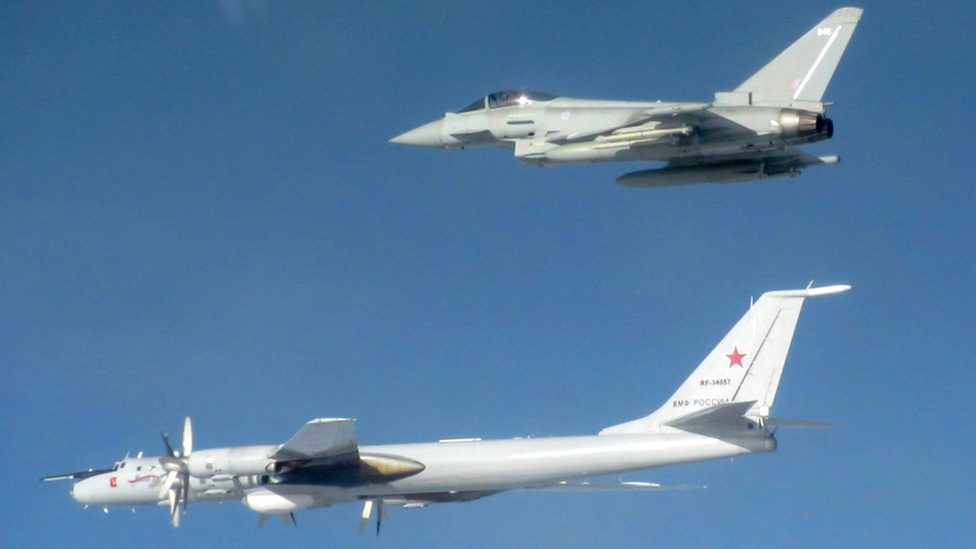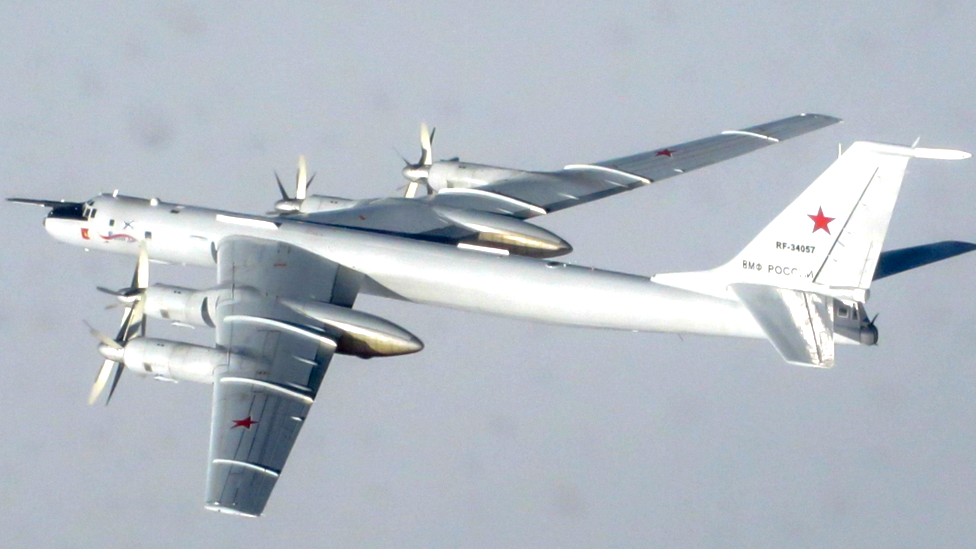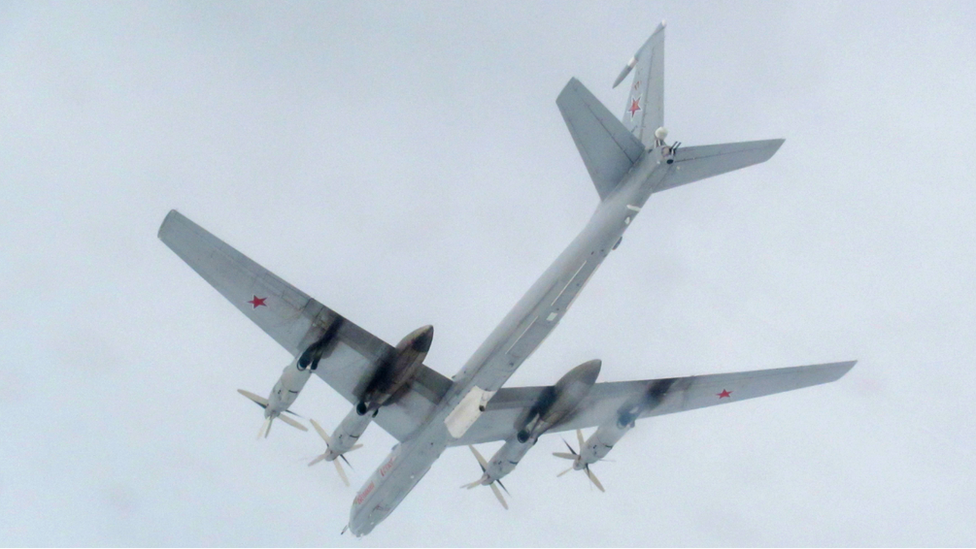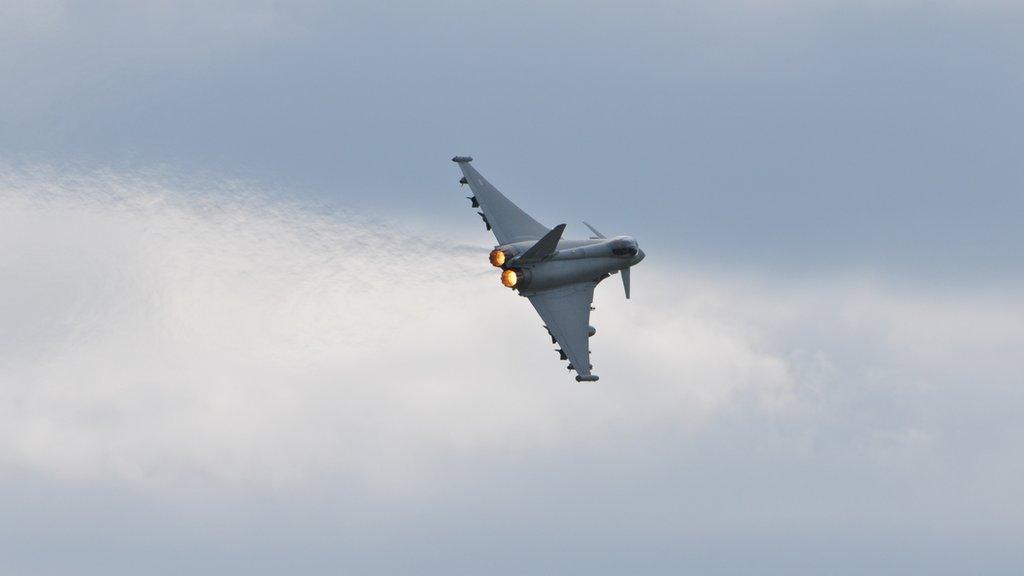Six RAF jets intercept Russian aircraft heading for Scottish coast
- Published

An RAF Typhoon closes in on a Russian aircraft during the latest interception on Saturday
Six RAF fighter jets were scrambled to intercept Russian aircraft as they approached British airspace, the Ministry of Defence has said.
The Russian bombers were tracked heading towards the north-west coast of Scotland on Saturday.
It prompted the air force to deploy three pairs of Typhoons from its Quick Reaction Alert programme.
Two pairs left from RAF Lossiemouth in Moray, while the third flew from RAF Coningsby in Lincolnshire.
Flying in formation, two pairs approached the aircraft before withdrawing, while the third pair forced them to change course.

The Russian aircraft were tracked heading towards the north-west coast of Scotland
The Russian aircraft were later identified as Tupolev Tu-142 Bears, which are used both as strategic bombers and long-range maritime patrol planes.
The total number of Russian aircraft involved in the incident has not been revealed.
"This was a routine response to Russian aircraft approaching UK air space and was co-ordinated with several other Nato allies," an RAF spokesman said.

It is not known how many Russian aircraft were involved
RAF Lossiemouth tweeted: "At no point did these aircraft enter UK sovereign airspace.
"The Russian aircraft were shadowed by our Typhoons, along with (Quick Reaction Alert) aircraft from our NATO partners in Norway and France."
It added: "We are ready to respond to any unidentified aircraft and potential airborne threats, 24/7/365."
Last month, RAF jets were scrambled from Lossiemouth after reports of unidentified aircraft flying towards UK airspace.
The aircraft, thought to have been Russian bombers, were spotted off Shetland.
The bombers were not intercepted as they remained outside of the area considered UK airspace.

What risks do the Russian aircraft pose?

The Russian aircraft often remain out of contact with air traffic control
RAF Typhoons have been deployed on about 10 occasions since the start of last year to intercept Russian aircraft as they approach UK airspace.
The biggest danger they are trying to avert is not to military targets, but to civilian airliners.
Here, the team at RAF Lossiemouth explain why.
"The two Russian aircraft intercepted and shadowed on Saturday were a Tupolev Tu-142 Bear-F and a Tupolev Tu-142 Bear-J.
"The Bear-F is an anti-submarine warfare aircraft while the Bear-J is a communications relay platform.
"They pose two potential problems.
"These aircraft often don't talk to air traffic control and may not be 'squawking', which means broadcasting a code seen by other aircraft.
"As their intentions are unknown, controllers reroute civilian traffic to ensure they are safely separated and deconflicted.
"Acting as a communications relay, the Bear-J trails a very long 'trailing wire antenna'. This antenna can extend out almost five miles, and poses a potential risk to anything flying in its trail if not managed by air traffic controllers.
"Not only do our Typhoons act as a deterrent to this activity, but they can make themselves visible to air traffic controllers and Battlespace Managers.
"Ultimately, we are not just securing the skies, but making them safer for other airspace users."

All images subject to copyright
- Published20 December 2019
